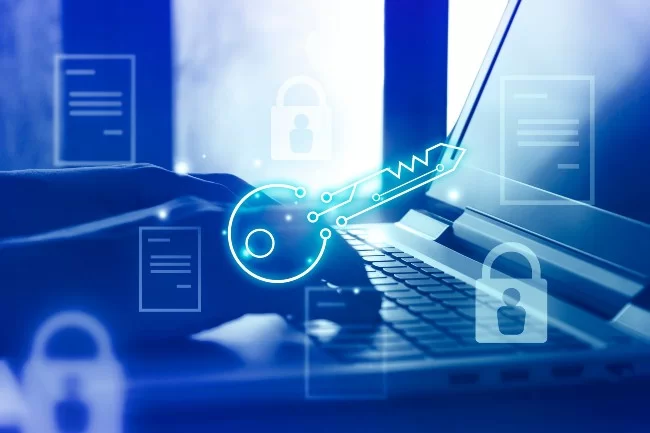As remote work continues to reshape the professional landscape, effective leadership in virtual environments becomes a crucial skill for managers. In this extended edition of “The Remote Manager’s Playbook,” we explore eight additional keys to empower leaders in fostering seamless team collaboration and success.

“Cash Flow Explosion: Start Earning Big Bucks TODAY – Absolutely FREE Training!”
1. Proactive Cybersecurity Awareness Training: With the rise of remote work, cybersecurity is paramount. Implement proactive cybersecurity awareness training for your team, equipping them with the knowledge to identify potential threats, follow best practices for data protection, and adhere to secure communication protocols.


2.Results-Oriented Performance Metrics: Shift from traditional performance metrics to a results-oriented approach, emphasizing measurable outcomes over activities. Clearly define key performance indicators (KPIs) to encourage a goal-driven mindset and enable team members to take ownership of their contributions.
3.Flexible Work Arrangement Policies: Recognize the importance of flexibility by implementing clear and comprehensive flexible work arrangement policies. Address flexible hours, remote work locations, and adaptable schedules to accommodate diverse individual needs, enhancing overall team satisfaction and productivity.

“Cash Flow Explosion: Start Earning Big Bucks TODAY – Absolutely FREE Training!”

4.Emphasis on Continuous Learning Culture: Foster a continuous learning culture by encouraging ongoing education and knowledge-sharing. Provide access to resources, support participation in virtual conferences, and emphasize continuous skill development to ensure your team remains adaptive and well-equipped.
5.Effective Crisis Communication Protocols: Develop and communicate clear crisis communication protocols to guide your team through unforeseen challenges. Establish communication channels, address potential crises proactively, and ensure that team members are well-informed and supported during turbulent times.

“Cash Flow Explosion: Start Earning Big Bucks TODAY – Absolutely FREE Training!”

6.Community Engagement Beyond the Virtual Workspace: Extend your team’s impact by encouraging community engagement initiatives. Support team members in participating in local or global community service projects to reinforce a sense of corporate social responsibility and foster a shared commitment to making a positive impact.
7.Technology Optimization for Seamless Collaboration: Optimize the use of technology to facilitate seamless collaboration within your remote team. Regularly assess and update the tools and platforms your team uses for communication, project management, and collaboration to ensure efficiency and effectiveness.

“Cash Flow Explosion: Start Earning Big Bucks TODAY – Absolutely FREE Training!”

8.Psychological Safety and Inclusivity: Prioritize psychological safety within your remote team by fostering an inclusive and supportive environment. Encourage open communication, active listening, and the expression of diverse opinions without fear of reprisal to empower your team to innovate, collaborate, and thrive.
Proactive Cybersecurity Awareness Training
Proactive Cybersecurity Awareness Training is all about empowering people to stay ahead of cyber threats by understanding them and knowing how to protect themselves and their information. It’s like putting on a cyber-shield!
Here’s the gist:
“Cash Flow Explosion: Start Earning Big Bucks TODAY – Absolutely FREE Training!”
- Learning about common cyber threats: This includes things like phishing scams, malware, social engineering, and online scams. By understanding how these threats work, you can spot them more easily and avoid falling victim.
- Developing safe computing habits: This covers things like using strong passwords, being careful about what you click on, and being cautious about sharing personal information online. These good habits make it harder for attackers to trick you.
- Staying informed about new threats: The world of cybersecurity is always changing, so it’s important to stay up-to-date on the latest threats and scams. This could involve reading security blogs, attending awareness events, or taking refresher training courses.
Think of it like learning how to stay healthy: you learn about germs, how to wash your hands, and what to eat to stay strong. Proactive Cybersecurity Awareness Training is like learning how to stay safe online in a similar way.
Here are some benefits of Proactive Cybersecurity Awareness Training:
- Protects you and your information: By being aware of the risks, you’re less likely to fall victim to cyberattacks, which can keep your personal information and devices safe.
- Protects your loved ones: Cyberattacks can also target your friends and family. By being aware, you can help them stay safe too.
- Protects your organization: If you work or go to school, being cyber-aware can help protect sensitive information and systems from harm.
I hope this helps! Let me know if you have any other questions about Proactive Cybersecurity Awareness Training.
Results-Oriented Performance Metrics
Here’s a breakdown of Results-Oriented Performance Metrics, designed for clarity and understanding:
What they are:
“Cash Flow Explosion: Start Earning Big Bucks TODAY – Absolutely FREE Training!”
- Measures that focus on actual outcomes achieved, rather than just activities or efforts.
- They assess how well goals and objectives are being met.
- They help organizations and individuals evaluate progress and make informed decisions.
Key characteristics:
- Clearly defined: They precisely state what’s being measured, like “Increase website traffic by 15% in 3 months.”
- Quantifiable: They can be expressed numerically, like “Reduce customer wait time to under 5 minutes.”
- Tied to specific goals: They directly link to the desired outcomes, like “Improve customer satisfaction by 8% in 6 months.”
- Regularly tracked: They are monitored over time to assess progress and make adjustments.
Common examples:
- Sales: Number of units sold, revenue generated
- Customer satisfaction: Customer survey ratings, positive feedback
- Productivity: Units produced per hour, tasks completed per day
- Employee engagement: Employee survey scores, retention rates
- Website traffic: Number of visitors, time spent on site
- Social media engagement: Likes, shares, comments
Benefits of using them:
- Improved focus: They direct attention to what matters most: results.
- Enhanced decision-making: They provide data-driven insights for better choices.
- Increased accountability: They clarify expectations and track progress.
- Motivated employees: They create a sense of ownership and accomplishment.
- Enhanced performance: They drive improvement and achievement of goals.
Remember:
- Choose metrics carefully: Select those most relevant to your goals.
- Collect accurate data: Ensure data reliability for meaningful insights.
- Communicate results: Share findings with stakeholders to drive action.
- Use results to make improvements: Adjust strategies based on data.
Additional tips:
- Involve employees in setting metrics: This fosters engagement and buy-in.
- Provide regular feedback: Help employees track progress and make adjustments.
- Recognize and reward success: Celebrate achievements to reinforce positive outcomes.
Flexible Work Arrangement Policies
Flexible Work Arrangement Policies (FWAs) are guidelines businesses set to offer employees choices in how and where they work. These policies aim to support a better work-life balance and increase productivity by allowing employees to:
“Cash Flow Explosion: Start Earning Big Bucks TODAY – Absolutely FREE Training!”
- Adjust their work schedules: This could include flextime (variable start and end times), compressed workweeks (fewer longer days), or part-time options.
- Choose their work location: This could include remote work (from home or another approved location), hybrid work (combination of office and remote), or co-working spaces.
- Modify their work style: This could include condensed work periods, asynchronous communication, or tailored workflows.
Benefits of FWAs:
- For employees: Improved work-life balance, reduced stress, increased productivity, enhanced job satisfaction, and better talent attraction and retention.
- For businesses: Increased employee engagement and well-being, improved talent acquisition and retention, reduced absenteeism, potential cost savings on office space and overheads, and greater access to a wider talent pool.
Examples of FWA policies:
- A company might allow employees to work remotely up to two days per week.
- Another company might offer condensed workweeks for certain roles, where employees work 10-hour days for four days and have a three-day weekend.
- Some companies might offer job sharing arrangements, where two part-time employees split the responsibilities of one full-time position.
Things to consider:
- FWAs may not be suitable for all roles or businesses.
- Clear communication and expectations are essential for successful implementation.
- Technology and equipment needs may need to be addressed.
Overall, FWAs can be a valuable tool for both employees and businesses to create a more flexible and productive work environment.
I hope this information is helpful! Let me know if you have any other questions.
Emphasis on Continuous Learning Culture
An emphasis on continuous learning culture is all about fostering an environment where learning is valued and encouraged throughout your life, both inside and outside of work or school. It’s like building a growth mindset, where you see challenges as opportunities to learn and improve, and you’re always seeking out new knowledge and skills.
Here are some key features of a continuous learning culture:
“Cash Flow Explosion: Start Earning Big Bucks TODAY – Absolutely FREE Training!”
- Learning opportunities are readily available and accessible. This could include things like online courses, workshops, conferences, mentorship programs, and even just having access to a good library or learning resources.
- There’s a positive attitude towards learning. People are encouraged to ask questions, experiment, and make mistakes. It’s seen as a normal part of the learning process.
- Learning is seen as valuable and relevant to work or life. People can see how what they’re learning can be applied to their jobs, their hobbies, or their personal development.
- There’s a culture of collaboration and sharing. People are encouraged to share their knowledge and experiences with others, which can help everyone learn and grow.
Here are some benefits of a continuous learning culture:
- It can help you stay ahead of the curve in your field. The world is constantly changing, and new skills and knowledge are always emerging. A continuous learning culture can help you keep up with the latest trends and stay competitive.
- It can boost your creativity and problem-solving skills. When you’re constantly learning new things, you’re more likely to come up with new ideas and solutions to problems.
- It can make you more adaptable and resilient. In today’s rapidly changing world, it’s important to be able to adapt to new challenges and situations. A continuous learning culture can help you develop the skills you need to be successful in any environment.
- It can make you a more well-rounded person. Learning new things can help you grow as a person and expand your horizons. It can also make you more interesting and engaging to be around.
Overall, a continuous learning culture is a great way to invest in yourself and your future. It can help you achieve your goals, both personal and professional, and make you a happier and more fulfilled person.
Here are some images that represent the concept of a continuous learning culture:
- A person climbing a mountain, symbolizing the effort and perseverance required for continuous learning.
- A group of people sitting in a circle, sharing knowledge and ideas.
- A light bulb, symbolizing the spark of creativity that can come from learning new things.
- A brain, symbolizing the importance of using your mind to learn and grow.
I hope this helps! Let me know if you have any other questions.
Effective Crisis Communication Protocols
Effective crisis communication protocols are like having a roadmap for navigating turbulent waters. They help organizations and individuals respond to negative events in a clear, calm, and controlled way, minimizing damage to reputation and fostering trust with stakeholders.
Here are some key elements of effective crisis communication protocols:
“Cash Flow Explosion: Start Earning Big Bucks TODAY – Absolutely FREE Training!”
1. Preparation is Key:
- Assemble a Crisis Team: This team should include representatives from various departments, such as public relations, legal, operations, and human resources.
- Identify Potential Crises: Brainstorm a list of potential crises that could impact your organization, considering internal and external threats.
- Develop Communication Plans: Create specific plans for different types of crises, outlining key messages, communication channels, and responsible spokespersons.
2. Rapid Response:
- Speed is crucial: The faster you acknowledge and address a crisis, the more control you have over the narrative. Aim to issue a statement within the first hour if possible.
- Be transparent and honest: Don’t cover up information or try to deflect blame. Provide accurate and truthful updates as they become available.
- Emphasize empathy and concern: Show genuine care for those affected by the crisis and acknowledge the potential impact on them.
3. Clear and Consistent Communication:
- Use plain language: Avoid jargon and technical terms that your audience may not understand. Communicate clearly and concisely.
- Stick to your key messages: Reinforce the core points you want to get across in all your communications.
- Utilize multiple channels: Reach your audience through various channels, such as press releases, social media, employee town halls, and media briefings.
4. Ongoing Monitoring and Adaptation:
- Track the situation: Monitor media coverage, social media sentiment, and stakeholder feedback to gauge the effectiveness of your communication efforts.
- Be prepared to adapt: As the situation evolves, be ready to adjust your communication plans and messages accordingly.
5. Learning and Improvement:
“Cash Flow Explosion: Start Earning Big Bucks TODAY – Absolutely FREE Training!”
- Conduct a post-crisis review: After the crisis has subsided, take the time to evaluate your communication response. Identify what worked well and what could be improved for future events.
Remember: Effective crisis communication is an ongoing process, not a one-time event. By having a well-defined plan and practicing your response, you can be better prepared to handle whatever challenges come your way.
Here are some additional tips for effective crisis communication:
- Train your spokespersons: Media training can help your spokespeople deliver clear and confident messages under pressure.
- Use visuals effectively: Images, infographics, and videos can help communicate complex information more effectively.
- Show, don’t just tell: Provide concrete examples and stories to illustrate your points.
- Be patient: Rebuilding trust takes time. Be patient and consistent in your communication efforts.
By following these guidelines, you can develop effective crisis communication protocols that will help your organization weather any storm.
I hope this information is helpful! Let me know if you have any other questions.
Community Engagement Beyond the Virtual Workspace
Community engagement beyond the virtual workspace refers to fostering connections and building relationships with a community in the real world, offline. While virtual platforms offer valuable tools for communication and collaboration, true community engagement often involves face-to-face interaction, shared experiences, and a sense of physical presence.
Here are some examples of community engagement beyond the virtual workspace:
“Cash Flow Explosion: Start Earning Big Bucks TODAY – Absolutely FREE Training!”
- Volunteering or participating in local events: This could involve anything from helping out at a community garden to attending a neighborhood block party.
- Joining clubs or groups based on shared interests: This could be a sports team, a book club, or a group focused on a specific cause.
- Mentoring or tutoring others: Sharing your knowledge and skills with others can be a rewarding way to connect with your community.
- Supporting local businesses and organizations: Shopping at local stores, eating at local restaurants, and donating to local charities can all help to strengthen your community.
- Participating in local government or activism: Getting involved in decision-making processes and advocating for issues that matter to you can be a powerful way to make a difference.
The benefits of community engagement beyond the virtual workspace are numerous. It can help you:
- Build meaningful relationships: Face-to-face interaction can foster deeper connections than online interactions.
- Develop new skills and knowledge: Participating in community activities can expose you to new ideas and perspectives.
- Make a positive impact on your community: Your involvement can help to address local challenges and improve the lives of others.
- Boost your own well-being: Studies have shown that community engagement can improve mental and physical health.
If you’re interested in getting more involved in your community, there are many resources available to help you get started. You can talk to your neighbors, check with your local community center, or search online for groups and organizations that align with your interests.
Remember, even small acts of engagement can make a big difference. So get out there, connect with your community, and see what you can achieve together!
Technology Optimization for Seamless Collaboration
Technology optimization for seamless collaboration is all about using the right tools and strategies to make teamwork smooth and efficient, whether you’re working in the same place or scattered across the globe. It’s about removing friction and distractions, so everyone can focus on what matters most: getting things done together.
Here are some key areas of focus for technology optimization in collaboration:
“Cash Flow Explosion: Start Earning Big Bucks TODAY – Absolutely FREE Training!”
Communication:
- Cloud-based tools: Shared platforms for documents, calendars, and messaging keep everyone in sync, regardless of location or device.
- Video conferencing: Face-to-face interaction builds trust and fosters connection, even when you’re miles apart.
- Collaboration platforms: Real-time editing, task management, and project tracking tools keep everyone on the same page and moving forward.
Workflow:
- Automation: Repetitive tasks can be automated, freeing up time for creative thinking and collaboration.
- Project management tools: Keep track of deadlines, dependencies, and progress, ensuring everyone knows what they need to do and when.
- Data visualization: Share insights and make informed decisions based on shared data, presented in a clear and easy-to-understand way.
Security and Privacy:
- Secure data storage and access: Protect sensitive information while ensuring everyone has the access they need to collaborate effectively.
- Privacy settings: Control who can see what and how information is shared, building trust and respecting individual boundaries.
Remember, the best technology for collaboration is the one that fits your team’s specific needs and workflows. It’s not about having the fanciest tools, but about using them effectively to remove barriers and empower your team to work together seamlessly.
By focusing on these areas, you can create a collaborative environment where everyone feels heard, valued, and able to contribute their best work. This can lead to increased productivity, creativity, and overall satisfaction for everyone involved.
I hope this helps! Let me know if you have any other questions.
Psychological Safety and Inclusivity
Psychological Safety and Inclusivity Explained
Psychological safety and inclusivity are two closely related concepts that are essential for creating positive and productive environments, whether it’s a team at work, a classroom, or even a friend group. Here’s what they mean:
Psychological safety:
“Cash Flow Explosion: Start Earning Big Bucks TODAY – Absolutely FREE Training!”
- Feeling safe to take risks: This means feeling comfortable speaking up with ideas, even if they’re different or you’re not sure how they’ll be received.
- Being able to admit mistakes: It’s okay to make mistakes, and people should feel safe learning from them without fear of judgment or punishment.
- Asking for help: Not knowing everything is normal, and people should feel comfortable asking for help when they need it.
- Being yourself: You can be yourself and express your unique perspective without feeling like you’ll be judged or excluded.
Inclusivity:
- Everyone feels like they belong: Regardless of their background, identity, or experiences, everyone feels welcome and valued.
- Everyone has a voice: Everyone has the opportunity to share their thoughts and ideas, and those ideas are listened to and considered.
- Everyone is treated fairly: People are treated with respect and dignity, regardless of their differences.
- Diverse perspectives are encouraged: Different backgrounds and viewpoints are seen as strengths, not weaknesses.
Why are these things important?
When people feel psychologically safe and included, they’re more likely to:
- Be creative and innovative: They feel free to take risks and think outside the box.
- Collaborate effectively: They trust each other and are willing to work together towards shared goals.
- Learn and grow: They’re not afraid to make mistakes or ask for help, which allows them to learn and improve.
- Feel happy and fulfilled: They feel valued and respected, which leads to greater job satisfaction and overall well-being.
So, how can we create an environment that’s both psychologically safe and inclusive?
There are many things you can do to create a positive and supportive environment, such as:
- Be respectful of everyone: Treat everyone with respect, regardless of their differences.
- Listen actively: Pay attention to what others are saying and try to understand their perspective.
- Be open to feedback: Welcome feedback, even if it’s critical.
- Celebrate diversity: Appreciate the unique qualities that everyone brings to the table.
- Speak up against discrimination: Don’t be afraid to call out unfair or discriminatory behavior.
Remember, creating a psychologically safe and inclusive environment is an ongoing process. It takes time and effort, but it’s definitely worth it for everyone involved.
I hope this explanation helps! Let me know if you have any other questions.
“Cash Flow Explosion: Start Earning Big Bucks TODAY – Absolutely FREE Training!”
These additional keys, when integrated into your remote management strategy, will further enhance your ability to lead with confidence and effectiveness in the evolving landscape of remote work.
I appreciate you reading my full article, The Remote Manager’s Playbook: 8 Keys to Seamless Team Leadership



